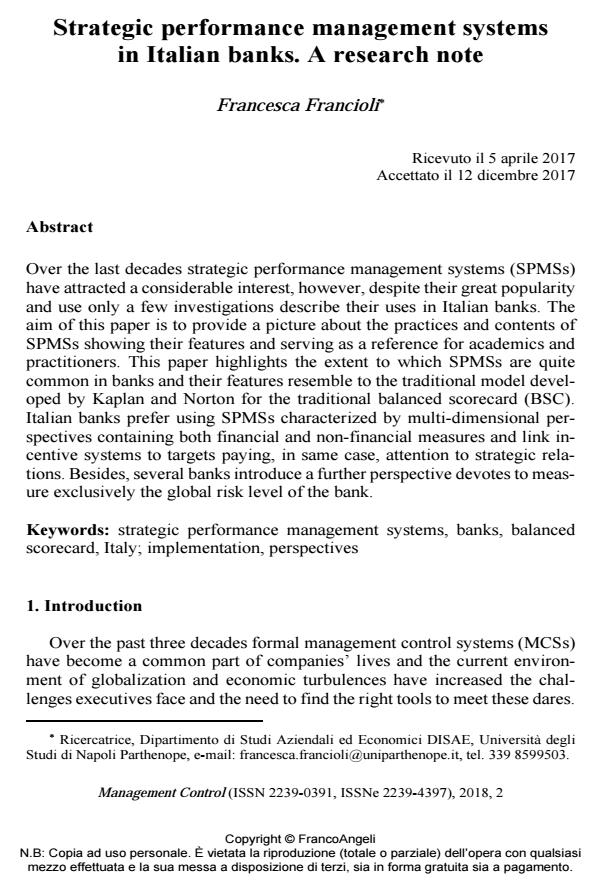Strategic performance management systems in Italian banks. A research note
Titolo Rivista MANAGEMENT CONTROL
Autori/Curatori Francesca Francioli
Anno di pubblicazione 2018 Fascicolo 2018/2
Lingua Italiano Numero pagine 24 P. 155-178 Dimensione file 267 KB
DOI 10.3280/MACO2018-002008
Il DOI è il codice a barre della proprietà intellettuale: per saperne di più
clicca qui
Qui sotto puoi vedere in anteprima la prima pagina di questo articolo.
Se questo articolo ti interessa, lo puoi acquistare (e scaricare in formato pdf) seguendo le facili indicazioni per acquistare il download credit. Acquista Download Credits per scaricare questo Articolo in formato PDF

FrancoAngeli è membro della Publishers International Linking Association, Inc (PILA)associazione indipendente e non profit per facilitare (attraverso i servizi tecnologici implementati da CrossRef.org) l’accesso degli studiosi ai contenuti digitali nelle pubblicazioni professionali e scientifiche
Over the last decades strategic performance management systems (SPMSs) have attracted a considerable interest, however, despite their great popularity and use only a few investigations describe their uses in Italian banks. The aim of this paper is to provide a picture about the practices and contents of SPMSs showing their features and serving as a reference for academics and practitioners. This paper highlights the extent to which SPMSs are quite common in banks and their features resemble to the traditional model developed by Kaplan and Norton for the traditional balanced scorecard (BSC). Italian banks prefer using SPMSs characterized by multi-dimensional perspectives containing both financial and non-financial measures and link incentive systems to targets paying, in same case, attention to strategic relations. Besides, several banks introduce a further perspective devotes to measure exclusively the global risk level of the bank.
Parole chiave:Strategic performance management systems, banks, balanced scorecard, Italy; implementation, perspectives
- Il Business Model delle Banche di Credito Cooperativo: Tra Sostenibilità e Tecnologia Ferdinando Di Carlo, Manuela Lucchese, Valery Rago, Silvia Solimene, in MANAGEMENT CONTROL 2/2025 pp.109
DOI: 10.3280/MACO2025-002006
Francesca Francioli, Strategic performance management systems in Italian banks. A research note in "MANAGEMENT CONTROL" 2/2018, pp 155-178, DOI: 10.3280/MACO2018-002008